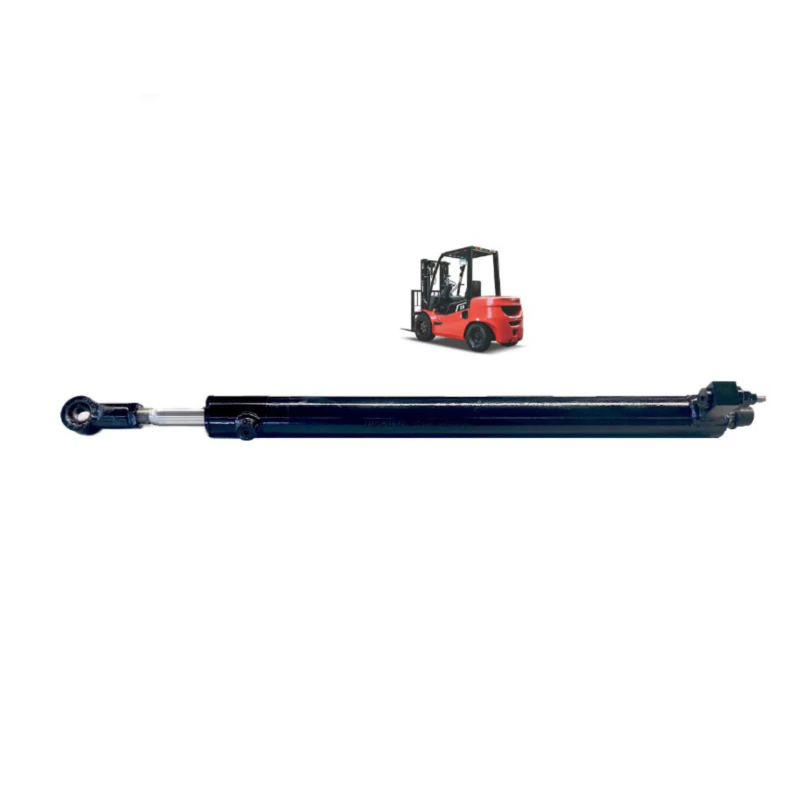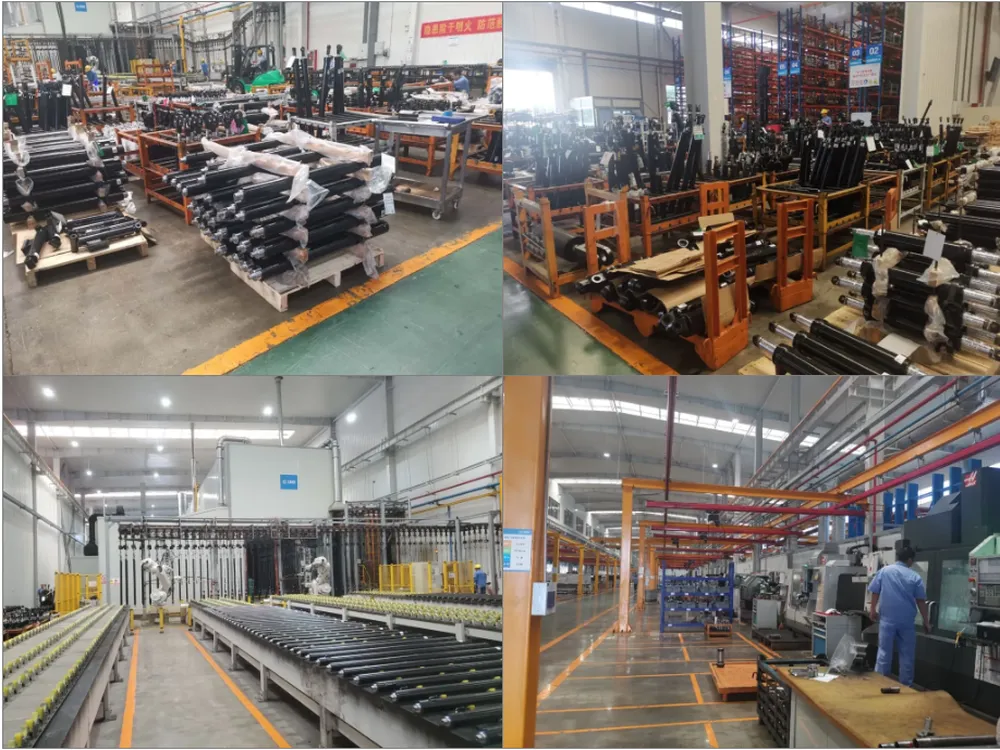Tilt Cylinder Performance in Extreme Conditions
Tilt cylinders are hydraulic cylinders that are used to tilt the bucket or attachment on a machine. They are commonly used in heavy-duty machines such as bulldozers, excavators, and loaders. Tilt cylinders are designed to perform in extreme conditions and ensure that the machine operates smoothly and efficiently. In this article, we will discuss the performance of tilt cylinders in extreme conditions, their working principle, how to choose the appropriate tilt cylinder for a specific application, and how to install them.
What are Tilt Cylinders?
Tilt cylinders are hydraulic cylinders that are responsible for the tilting mechanism of the bucket or attachment on a machine. The cylinder is attached to the tilting mechanism and the frame of the machine. The hydraulic fluid is pumped into the cylinder, which activates the piston and moves the cylinder rod to tilt the bucket or attachment. Tilt cylinders are designed to withstand high pressure, extreme temperatures, and harsh working environments.
The Performance of Tilt Cylinders in Extreme Conditions
Tilt cylinders are designed to perform in extreme conditions and ensure the smooth operation of the machine. The following are some of the extreme conditions in which tilt cylinders can perform:
High Temperature
Tilt cylinders can perform in high temperatures of up to 120¡ãC. This is because they are made of high-quality materials that are resistant to heat. The hydraulic fluid used in the cylinder is also specially formulated to withstand high temperatures.
Low Temperature
Tilt cylinders can also perform in low temperatures of up to -40¡ãC. This is because they are designed with seals that are resistant to cold temperatures. The hydraulic fluid used in the cylinder is also specially formulated to withstand low temperatures.
High Pressure
Tilt cylinders are designed to withstand high pressure of up to 350 bar. This is because they are made of high-quality materials that can withstand high pressure. The hydraulic system used to operate the cylinder is also designed to handle high pressure.
Harsh Working Environments
Tilt cylinders are designed to perform in harsh working environments such as in mines, construction sites, and quarries. They are made of materials that are resistant to corrosion and wear and tear. The seals used in the cylinder are also designed to prevent dirt and other debris from entering the cylinder.
Working Principle of Tilt Cylinders
The working principle of tilt cylinders is based on hydraulic pressure. The hydraulic fluid is pumped into the cylinder, which activates the piston and moves the cylinder rod. The movement of the cylinder rod tilts the bucket or attachment. The amount of tilt is determined by the amount of hydraulic fluid pumped into the cylinder. The hydraulic system used to operate the cylinder is designed to handle high pressure.

How to Choose the Appropriate Tilt Cylinder for a Specific Application
Choosing the appropriate tilt cylinder for a specific application is important to ensure that the machine operates smoothly and efficiently. The following are some factors to consider when choosing a tilt cylinder:
Operating Pressure
The operating pressure of the hydraulic system should be considered when choosing a tilt cylinder. The cylinder should be able to handle the maximum pressure of the hydraulic system.
Cylinder Stroke Length
The stroke length of the cylinder should be appropriate for the application. The stroke length determines the amount of tilt the cylinder can produce.
Cylinder Bore Diameter
The bore diameter of the cylinder should be appropriate for the application. The bore diameter determines the force the cylinder can produce.
Cylinder Mounting Style
The mounting style of the cylinder should be appropriate for the machine. The cylinder can be mounted on the rod end or the cap end.
Cylinder Seal Type
The seal type of the cylinder should be appropriate for the application. The seal type determines the resistance of the cylinder to dirt and debris.

How to Install Tilt Cylinders
Proper installation of the tilt cylinder is important to ensure that the machine operates smoothly and efficiently. The following are some steps to follow when installing a tilt cylinder:
Step 1: Prepare the Machine
Prepare the machine for the installation of the tilt cylinder. This involves shutting off the engine and releasing the hydraulic pressure in the system.
Step 2: Remove the Old Tilt Cylinder
Remove the old tilt cylinder from the machine. This involves removing the bolts that hold the cylinder in place.
Step 3: Install the New Tilt Cylinder
Install the new tilt cylinder in place of the old one. This involves aligning the cylinder with the mounting brackets and securing it in place with bolts.
Step 4: Connect the Hydraulic Hoses
Connect the hydraulic hoses to the tilt cylinder. This involves connecting the hoses to the ports on the cylinder and the hydraulic system.
Step 5: Test the Tilt Cylinder
Test the tilt cylinder to ensure that it is working properly. This involves operating the machine and checking the tilt mechanism.
Why Tilt Cylinder is Suitable for the Application and its Advantages
Tilt cylinders are suitable for the application of heavy-duty machines such as bulldozers, excavators, and loaders. The following are some advantages of using tilt cylinders:
Efficient Operation
Tilt cylinders ensure that the machine operates efficiently and smoothly. This is because they are designed to perform in extreme conditions and can withstand high pressure, harsh working environments, and extreme temperatures.
Increased Productivity
Tilt cylinders increase productivity by allowing the machine to operate efficiently. This is because they are designed to tilt the bucket or attachment smoothly and quickly.
Improved Safety
Tilt cylinders improve safety by ensuring that the machine operates smoothly and efficiently. This is because they are designed to handle high pressure and extreme conditions, which reduces the risk of accidents and machine failure.
Long Service Life
Tilt cylinders have a long service life because they are made of high-quality materials that are resistant to wear and tear. They are also designed to prevent dirt and debris from entering the cylinder, which reduces the risk of damage to the cylinder.
Easy Maintenance
Tilt cylinders are easy to maintain because they are designed with seals that are easy to replace. They are also designed to prevent dirt and debris from entering the cylinder, which reduces the need for frequent maintenance.

In conclusion, tilt cylinders are hydraulic cylinders that are designed to perform in extreme conditions and ensure that the machine operates smoothly and efficiently. They are suitable for heavy-duty machines such as bulldozers, excavators, and loaders. Tilt cylinders have many advantages such as efficient operation, increased productivity, improved safety, long service life, and easy maintenance. If you are looking for a tilt cylinder for your machine, it is important to choose the appropriate tilt cylinder based on factors such as operating pressure, cylinder stroke length, cylinder bore diameter, cylinder mounting style, and cylinder seal type. Our company has over 15 years of experience in the design, production, and sale of tilt cylinders, boom cylinders, forklift tilt cylinders, steering cylinders, small hydraulic cylinders, and hydraulic pistons. We provide high-quality products, efficient service, and competitive prices to our customers in Europe, America, Africa, Asia, and other regions. Contact us today to learn more about our products and services.
Edited by Czh.